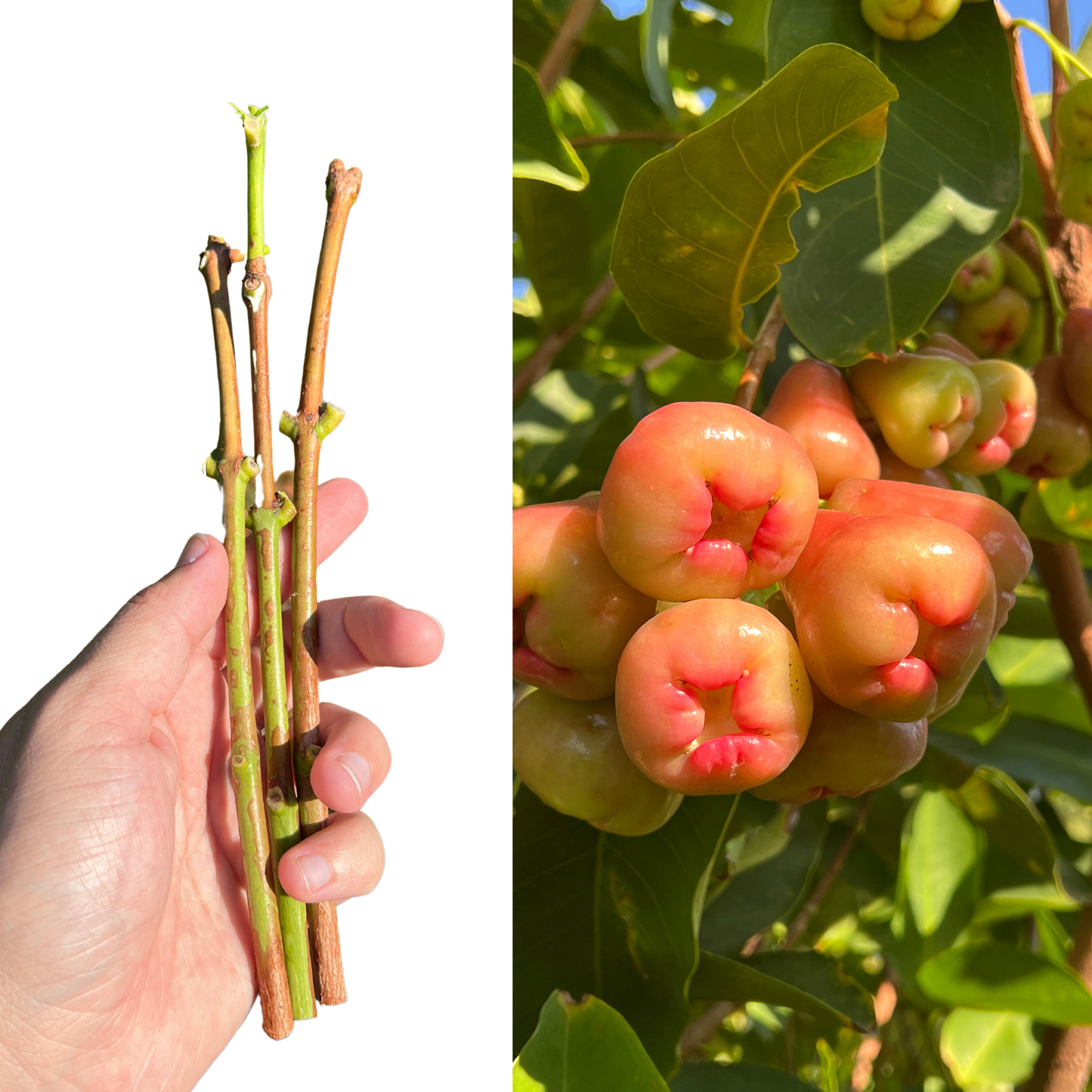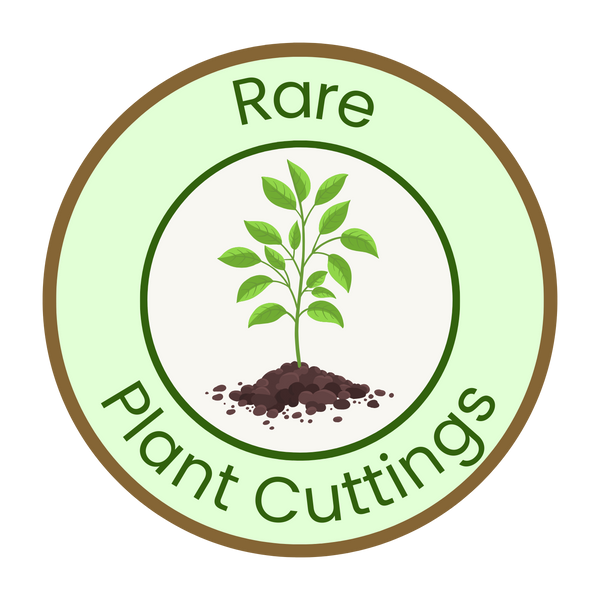Wax Jambu "Red" (3 Cuttings)
Wax Jambu "Red" (3 Cuttings)
Couldn't load pickup availability
Syzygium samarangense, commonly known as wax apple, Java apple, Semarang rose-apple, or wax jambu, is a species of flowering tree belonging to the Myrtaceae family. Native to regions including the Greater Sunda Islands, the Malay Peninsula, and the Andaman and Nicobar Islands, this species was introduced to a wider tropical range in prehistoric times and is now extensively cultivated in tropical climates worldwide.
Botanical Description
Syzygium samarangense is a tropical evergreen tree that can reach a height of up to 12 meters (39 feet). It has elliptical leaves that measure 10–25 cm (4–10 inches) long and 5–10 cm (2–4 inches) wide, with a rounded base. When crushed, the leaves release a distinctive aromatic scent. The tree has a relatively short trunk that supports a broad, open crown, which often starts branching at a low height. The bark is pinkish-gray, and it peels easily in thin flakes.
The flowers are white to yellowish-white, measuring approximately 2.5 cm (1 inch) in diameter. Each flower consists of four petals and numerous stamens, forming in clusters (panicles) of 3 to 30 near the tips of branches. The fruit is an edible, bell-shaped berry that varies in color from white, pale green, and green to red, purple, crimson, deep purple, or even black. Wild specimens typically produce fruit measuring 4–6 cm (1.6–2.4 inches) in length, with a thin skin and white, spongy flesh. Each fruit contains one or two rounded seeds, generally no larger than 0.8 cm (0.3 inches).
Unlike many fruiting trees, Syzygium samarangense produces flowers and fruit not only at leaf axils but also along its trunk and major branches. A mature tree is highly productive, capable of yielding up to 700 fruits per harvest cycle.
Fruit Characteristics and Flavor
When fully ripe, the fruit expands outward, creating a slight concavity on its underside, resembling a bell shape. Healthy wax apples exhibit a natural sheen on their skin. Despite its name, the fruit does not taste like an apple, nor does it share the same texture or fragrance. Instead, its flavor is more comparable to a snow pear, with a high water content similar to watermelon. The flesh has a loose, airy texture, unlike the dense structure of an apple or pear. At the center, the seed is enclosed in a cotton-like mesh, which is edible but flavorless. Depending on the cultivar, the juice may be colorless or purple.
Culinary and Cultural Uses
Several cultivars have been developed, particularly those with larger and sweeter fruits. Generally, darker or paler varieties tend to be sweeter. In Southeast Asia, the deep purple fruits are often referred to as “Black Pearl” or “Black Diamond,” while the pale greenish-white ones are called “Pearl” and are among the most expensive varieties in fruit markets.
The fruit is typically served whole, with the core removed to retain its distinct bell shape. In Indian Ocean island cuisine, it is commonly included in salads or lightly sautéed dishes. In the Philippines, where it is known as macopa (historically called dambo), it is often mistaken for tambis (Syzygium aqueum) due to their similar appearance, though the latter is more widely cultivated. Additionally, in some regions, the fruit is used to prepare pickles, such as chambakka achar.


